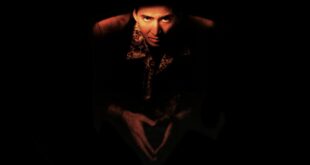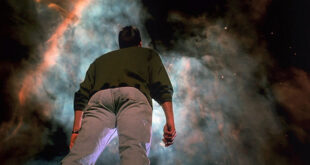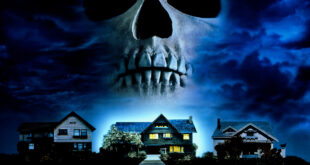Holocaust films can be tough viewing, and rightly so, but it also serves as a brutal and stark reminder of the Nazi regime. The Holocaust was a genocide during World War II, primarily targeting the Jewish population by the Nazi regime under Adolf Hitler’s leadership in Germany. It is estimated that six million Jews and millions of others, including Romani people, Poles, disabled individuals, political dissidents, and LGBTQ+ individuals, were systematically persecuted, deported, and exterminated. Many films have bravely tried to portray the Holocaust on screen to varying degrees of effectiveness. The most famous is Steven Spielberg’s Schindler’s List which won many Oscars and brought the Holocaust back to the limelight. Others include Life is Beautiful, The Diary of Anne Frank, The Pianist, Sophie’s Choice, The Pawnbroker, and Son of Saul. Not to mention Earth-shattering documentaries like Shoah (1985). None to me are more harrowing, sobering, and immediate than Tim Blake Nelson’s The Grey Zone, a film that premiered on September 11, 2001, and was forgotten after an initial film festival run. It didn’t premiere in the United States until over a year later. I will examine why The Grey Zone is perhaps the bleakest and most complex of all Holocaust films.
The film received pretty good reviews but was not overwhelming. Roger Ebert did admire the movie, and it was through him that I first heard about The Grey Zone. It’s a different kind of Holocaust film because the people in the death camps are central to the story. This is not a sweeping examination of the Holocaust or the rise of Nazism but a relatively simple, straightforward harrowing tale of resistance and the choice of having no choice. It’s an uncompromising, relentless depiction of the Auschwitz concentration camp’s realities, specifically from the perspective of the Sonderkommandos, Jewish prisoners forced to assist in the extermination process. Although somewhat fragmented due to the ensemble cast, the narrative centers around the Sonderkommandos’ plot to rebel against their captors. The film is based on actual events and is named after Primo Levi’s concept of the gray zone, a moral ambiguity that blurs the line between victim and perpetrator. The Sonderkommandos in the movie live in this ‘grey zone,’ forced to facilitate the murder of their people in return for a few more months of life.
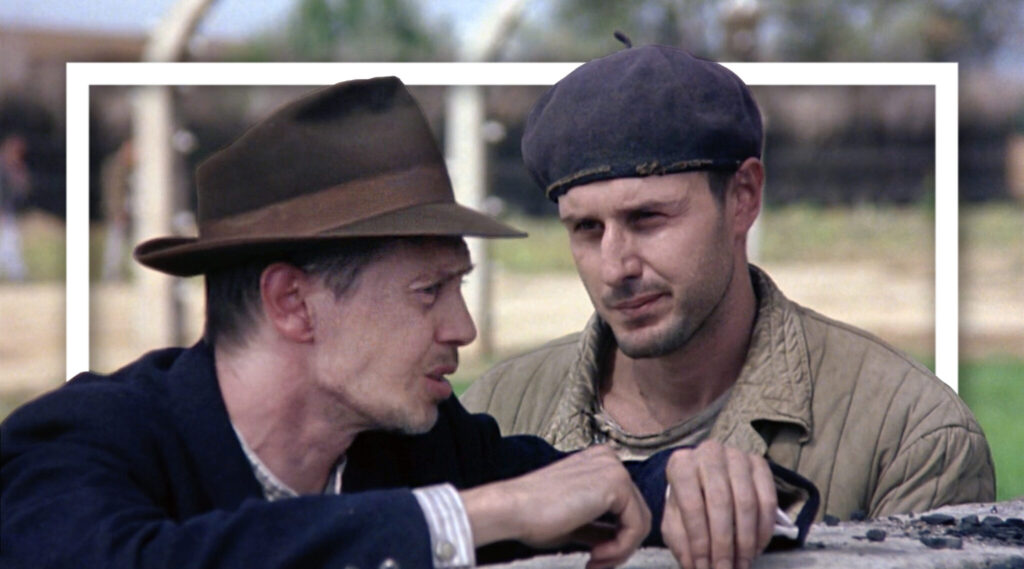
“How can you know what you’d do to stay alive until you’re asked?” a character named Hoffman tells the girl. At one point, Hoffman beats a man to death about to go to the gas chamber out of sheer frustration. Because the man knows that Hoffman is lying (he’s forced to tell them they’re going to take a shower and then be reunited with their families) in a scene that’s so brutal and shocking. The guilt of living is sometimes even worse than death. What stood out for me, personally, was the film’s exploration of moral ambiguity, the ‘grey zone’ of the title. The Sonderkommandos are victims, yet they’re also complicit in the atrocities. This film pushes you to grapple with complex ethical questions. What choices would you make in their shoes? Can survival ever justify such actions? It’s deeply unsettling and profoundly thought-provoking. There are Jewish characters in the film who are flawed and unflattering. The ethical questions pondered by this film will undoubtedly haunt you. These are extreme choices.
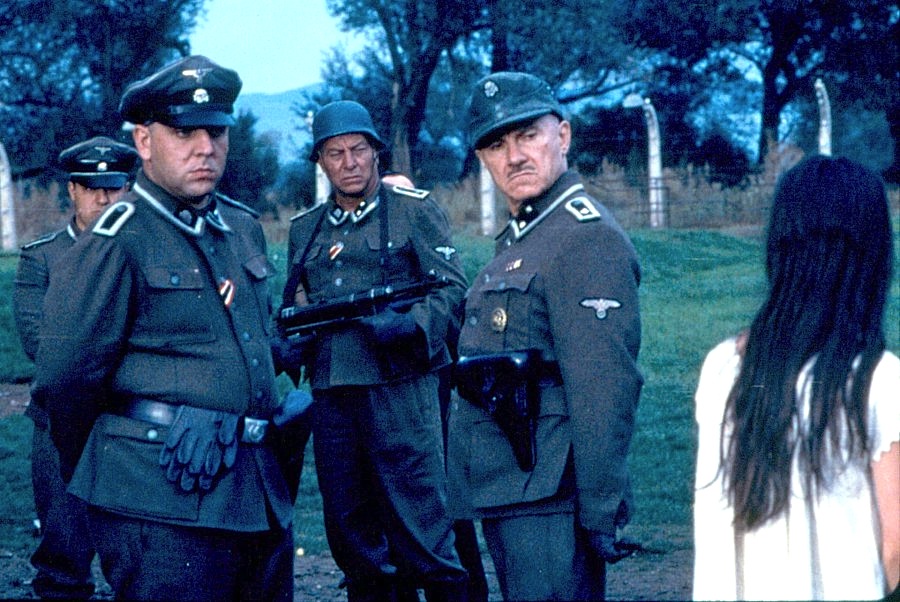
As mentioned, the film is based on a true story, and writer-director Tim Blake Nelson claims there’s no fiction. It’s based on multiple sources, including Amidst a Nightmare of Crime: Manuscripts of Prisoners in Crematorium Squads Found at Auschwitz, as well as Dr. Miklós Nyiszli’s Auschwitz: A Doctor’s Eyewitness Account and Primo Levi’s The Drowned And The Saved, a chapter of which provided the film’s name. The film was also heavily influenced by André Schwarz-Bart’s novel The Last of the Just and the memoirs of Dario Gabai and Filip Muller. The historical setting is based on the Birkenau revolt on October 7, 1944, at the Auschwitz II-Birkenau concentration camp. It was led by the Sonderkommandos, Jewish prisoners forced to assist in the extermination process. Facing death as they were to be replaced, they rebelled, using smuggled gunpowder to make crude grenades. They attacked SS guards and set a crematorium on fire. The revolt was suppressed, with all participants killed, and the four women who had smuggled the gunpowder were later publicly hanged.
The absolute stark realism stands out most about Tim Blake Nelson and his direction. Nelson is probably most known for being a character actor, most famously in the Coen Brothers’ O Brother, Where Art Thou? He’s not the first person that comes to mind when you think of a director who could handle such stark material, but Nelson displays his command of the craft. The way he shoots the film is brutal, obviously, but the worst violence is left to the imagination, the gas chambers. There are no shots inside the gas chambers, but we hear the screams and the smoke. The film’s common visual themes are smoke, gas, and burning up to the clouds. Nelson uses a muted color palette to underscore the bleakness of the Auschwitz concentration camp, creating a visually striking contrast between the grim reality inside the center and the world outside. His close-up shots add a sense of claustrophobia and immediacy, making the viewer feel uncomfortably close to the horror. It’s not a feel-good let’s gather the family around experience. There’s a cold starkness and emptiness in every frame of Nelson’s film. It’s a story of resistance, though valuable, that asks morally grueling questions and gives us nuanced characters.
The performances by the ensemble cast are all astounding. There are some big-time actors in the form, but none call attention to themselves, and the way the dialogue in the film is delivered is straightforward and low-key (because they need to remain secretive) but intense because lives are in balance. The cast is primarily American, and the actors speak English and not with accents other than Harvey Keitel, which was for the best. The cast includes David Arquette, Steve Buscemi, Mira Sorvino, Natasha Lyonne, and Daniel Benzali. David Arquette, known for comedies at the time, delivers an excellent performance as the morally compromised Hoffman. It’s a complicated and dark character to portray. Keitel is especially chilling, and though his English might put some off with a German accent, it works for the film. Steve Buscemi is a very unselfish actor and disappears into his role. The cast brings a raw humanity to this grim story, but none of it feels forced.
I almost feel bad for recommending such a grim film, but that’s what the Holocaust was. It’s not a story like Schindler’s List, which is more about the heroism of a German businessman. We do see the horrors of the Holocaust in graphic detail, but I think The Grey Zone offers more in terms of moral complexities. There are no savior narratives here. It’s not an easy watch, but it is a stark reminder of the treachery the Nazis put people under. Nelson is never preachy in the slightest. Everything is bleak. It does serve as a reminder of the need to remember, educate, and prevent such atrocities from happening in the future.

 Movie Finatics The Place for Movie Lovers
Movie Finatics The Place for Movie Lovers

